
The Mariners made progress in 2019. The change wasn’t always perceptible in the big leagues, where the team finished last in the American League West and missed the playoffs for the 18th straight season, but there were flashes toward the end of the year of the good things that were happening down on the farm. Take righthander Reggie McClain as an example. Seattle’s 13th-rounder out of Missouri in 2016 got hit around at high Class A Modesto for the first two full seasons of his career and returned there to begin 2019, albeit in the bullpen.
Something was different this time, and he suddenly found success. He made just six appearances at Modesto before moving to Double-A Arkansas, where he continued mowing down the competition. In 31.2 innings between the levels, McClain struck out 38 and walked just four hitters.
McClain’s success continued at Triple-A Tacoma, which led to his first big league callup on Aug. 2. The first five pitches out of his hand that day came in at 94, 93, 94, 96 and 94 mph. And while that velocity might be standard-issue in the big leagues these days, it represented a stark change for a pitcher whose fastball typically sat in the 87-91 mph range in college and throughout his first few pro seasons.
So where did that extra velocity come from? It might have started in the 2018 offseason during a program designed to help Mariners pitching prospects make gains. The program, informally called “Gas Camp,” lived up to its name with McClain, who increased his average fastball velocity roughly six miles per hour from 2018 to 2019.
“It changes everything for a pitcher. It changes the mentality. It changes what he’s willing to throw in what counts, and it changes how he attacks the strike zone,” Mariners farm director Andy McKay said, explaining Gas Camp. “All of those things were happening really right in front of us.”
この記事は Baseball America の March 2020 版に掲載されています。
7 日間の Magzter GOLD 無料トライアルを開始して、何千もの厳選されたプレミアム ストーリー、9,000 以上の雑誌や新聞にアクセスしてください。
すでに購読者です ? サインイン
この記事は Baseball America の March 2020 版に掲載されています。
7 日間の Magzter GOLD 無料トライアルを開始して、何千もの厳選されたプレミアム ストーリー、9,000 以上の雑誌や新聞にアクセスしてください。
すでに購読者です? サインイン
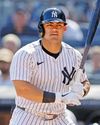
THE SERVICE TIME CONUNDRUM
MLB’s byzantine service time rules cloud rookie status and now PPI eligibility
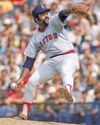
LUIS TIANT WAS MLB'S MOST SUCCESSFUL CUBAN PITCHER
On a scouting trip to Cuba in 1957, Bobby Avila discovered 16-year-old righthander Luis Tiant on the island's Juvenile League all-star team.
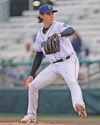
ORGANIZATION REPORT
Outfielder Heston Kjerstad's career has been unique, to say the least.

TOP 10 NL EAST
From the moment Thomas White stepped on a high school mound, he was viewed as the top lefthander available in the 2023 draft.

PREPARATION PAYS OFF
lowa politician J.D. Scholten makes a surprising return to pro ball at age 44

MAKING THE GRADE
Assessing the future value of graduated National League prospects
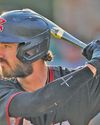
TOP 10 NL WEST
Even in high school, Bryce Eldridge could hit the ball a mile. The 6-foot-7 righthander could also touch 96 mph off the mound.
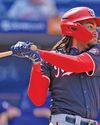
Wood Has Towering Upside- Nationals rookie James Wood also stands 6-foot-7 and also has game-changing power.
Aaron Judge and Oneil Cruz are 6-foot7 sluggers who stand out for their power in this year’s MLB Best Tools voting. Wood spent half of this season with Triple-A Rochester before making his MLB debut on July 1. While he was in the International League, he captured managers’ attention. Wood unanimously won Best Power Prospect and also claimed Most Exciting Player in a survey of league skippers. Wood hit .353/.463/.595 with 10 home runs in 52 games for Rochester. His .242 isolated slugging was the best for a player 21 or younger at Triple-A this season.
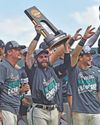
ROAD BLOCK?
Scholarship expansion puts mid-majors at a major disadvantage on the road to Omaha

ROYALS REVIVAL
A revamped and rejuvenated farm system has Kansas City ready to rebound